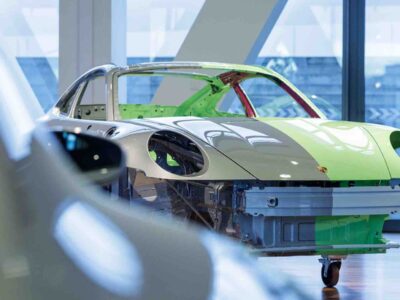With the COP26 climate summit coming to a close just over a month ago, industry leaders from around the globe have doubled down on the lofty environmental goals set at the Paris Climate Agreement of 2015 to curb the effects of a changing climate. Automakers, in particular, have been ramping up their production of electric cars to meet climate demands. While the technology for these electric vehicles (EVs) is up-and-coming, and battery range increases with every generation, the length of time it takes to charge these vehicles is a significant hangup to large-scale market feasibility. However, two European automotive startups, Lightyear and Sono Motors, have introduced solar electric car technology to ease the urgent need for charging infrastructure.
Both startups have developed fully EVs equipped with solar panels to improve their range and performance. Although, this technology is not new. Solar EVs have been around in high-tech engineering competitions like the World Solar Challenge to solar panel sunroofs for early generations of hybrid and EVs.
However, both automakers have taken the idea a step further and introduced commercially available EVs that integrate solar panels as a key part of the car’s performance.
Founded in 2016 by Dutch engineering student Lex Hoefsloot, the startup, Lightyear, created a solar-powered car that uses solar panels to extend the range of the battery. Since the launch of the prototype for their first car, the Lightyear One, the company set a very ambitious goal for themselves: “our goal is to deliver a car that in 15 years’ time will make sure you only need to charge once or twice a year, for every average driver in Europe,” said Hoefsloot.
The car itself is very cool. Solar panels almost entirely cover the top of the car. The Lightyear One lasts 440 miles on a single charge, which is noteworthy considering the well-loved Tesla Model S has an EPA estimated 396-mile range on its battery.
Its charging capabilities are also impressive. The car currently charges at 7.5 miles an hour, which may not seem like much, but it can account for the mileage of an average commute without being at a charging station. Hoefsloot speaks to this, saying, “solar power offers independence. You can just park your car, and it will charge. Solar cells have become increasingly cheap, and they just provide you clean, free, and hassle-free energy.”
Unfortunately, the car itself is currently in short supply and expensive, at around $175,000, but as they roll out cars starting in the summer of 2022, Lightyear anticipates producing a less expensive model by 2024 or 2025 for the mass market.
Sono Motors, the solar EV startup from Germany, is a few steps ahead in terms of commercial viability. While they just celebrated a successful IPO in mid-November that raised $150 million for their automotive production, Sono has been around since the mid-2010s. In 2015, founders Jona Christians and Laurin Hahn, both 18 at the time, created the framework for integrating solar power into vehicles. A year later, they then partnered with their current creative director and third prong of the founding trio, Navina Pernsteiner, to begin Sono Motors. With this technology, they have been able to license it to automakers who are looking to step into the solar electric market, as well as create a car of their own, called the Sono Sion.
The Sono Sion looks like your run-of-the-mill hatchback, but technologically it’s certainly more advanced. It features 248 solar panels across the roof and sides that augment the car’s battery power. Instead of glass, the solar cells are covered in a light, durable polymer to protect them from the occasional bump or scratch. The Sion has a fairly short range at 190 miles making it better suited for short distances and city driving, but with the addition of the solar panels, the car gains back about 70 miles per week, which just about covers weekly commute time. The car is fairly economical considering the technology, priced at just over $32,000, and highly sought after, considering over 15,000 people have reserved theirs for the release in early 2023. Unfortunately, the car is only available in Europe at the moment.
The rise of solar-powered automobiles is still in its early days and solar technology as a whole still has a ways to go. As it stands, solar panels only operate at between 20-35% efficiency. However, technology is improving at a rapid pace. Solar panels will only get lighter, more efficient, and less expensive, which means solar EVs will only become more economical and effective.
With the automotive industry quickly turning away from internal combustion engines, it seems like a perfect storm is brewing for the introduction of solar EVs, and only a matter of time before we see them on our roads.





